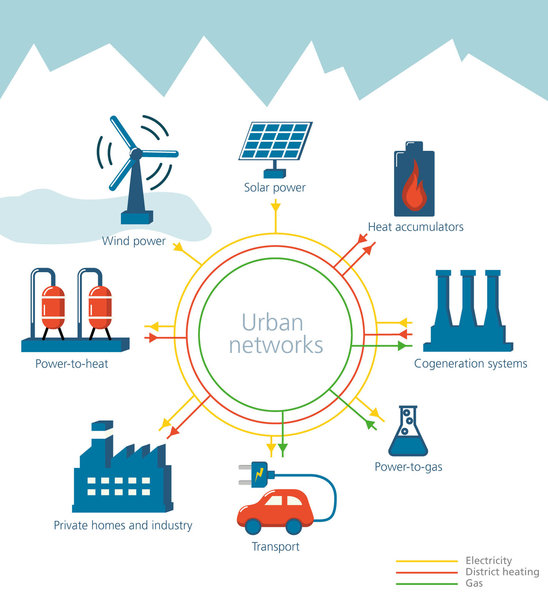www.industry-asia-pacific.com
03
'20
Written on Modified on
Fraunhofer connects energy production and storage
The good news is that renewables account for nearly 50 percent of electricity generated in Germany. The bad news is that they lack the flexibility to adapt to the day’s fluctuating electricity demand. They only furnish electrical energy when the wind blows or the sun shines. In a perfect world, engineers would find a way to store the vast amounts of energy generated by renewables and coordinate power production and storage. And that is exactly what ES-FLEX-INFRA, a joint project led by the Fraunhofer Institute for Algorithms and Scientific Computing SCAI, aims to do.

Funded by the state of North Rhine-Westphalia, the ES-FLEX-INFRA project’s express objective is to couple energy sectors in a bid to make their infrastructure more flexible. The software developed to this end aims to enable power utilities to analyze and shift loads, and integrate storage facilities into the urban infrastructure. The TH Köln University of Applied Sciences, Werusys GmbH & Co. KG and Rheinische NETZGesellschaft mbH have joined Fraunhofer SCAI in this venture.
“What happens when demand for electricity is high but the sun is not shining? How do we use the surplus energy when the situation is reversed? If the share of renewable energies continues to grow, the individual energy sectors’ conventional efforts to optimize energy usage will no longer be enough. Instead, it will be necessary to link energy sectors such as electrical power, natural gas, district heating and transport,” says Dr. Bernhard Klaassen, who is supporting the project at Fraunhofer SCAI. “For example, it is much more cost-effective and efficient to shift loads to balance out power generation and consumption, use industrial waste heat and store thermal energy than to store energy in the form of electricity.”
Upping efficiency with cross-energy management
Once the various energy sectors are properly connected, this sector coupling can serve to regulate production and storage also of heat. An inevitable side-effect of generating electrical power, heat can be so much more than just a waste product. At its best, this type of cross-energy management would be a perfect combination of electricity and heat generation paired with the optimum storage, distribution and use of this energy. This would make renewables-based power supply far more reliable and put it on the path to mainstream acceptance as a viable, long-term solution.
The researchers ran virtual trials in simulations to develop ES-FLEX-INFRA as a software-supported solution, but they also investigated Rheinische NETZGesellschaft’s real-world grid under varying load conditions. Their assessment addressed the electrical power, gas and heating sectors.
Some of the options that could make the infrastructure more flexible include:
• Using heat pumps, accumulators or grids to take advantage of waste heat and other heat flows that usually go unused
• Putting power-to-gas solutions into practice to generate methane with surplus electricity while tapping power-to-gas process heat for use in cogeneration systems
• Sourcing and feeding methane into gas grids and storage facilities, and using it in cogeneration systems
• Funneling surplus electricity to electric vehicles or, via power-to-gas, to vehicles running on natural gas
First industrial application up and running
“Demand for storage and other flexible options will continue to grow. The exit from fossil fuels and nuclear power is only going to be efficient and an economic success if we manage to connect the electricity, heat, gas and transport sectors – for example, by way of electric mobility or vehicles powered by natural gas – and capitalize on load flow and storage synergies,” says Klaassen.
Industry is discovering the benefits of sector coupling. Companies are looking into the simulation software developed by Fraunhofer SCAI to support their planning efforts, for example, for hydrogen applications. Germany’s leading gas pipeline operator, Essen-based Open Grid Europe GmbH (OGE), and others are already using it in industrial applications.
www.fraunhofer.de

